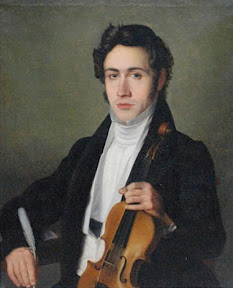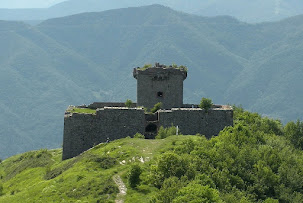Baroque musician also contributed to science
Giuseppe Tartini, who was influential in the development of music by establishing the modern style of violin bowing, was born on this day in 1692 in Pirano in the Republic of Venice.
As well as composing for violin, Tartini
established a new technique for playing
A violinist, baroque composer, and theorist, Tartini also formulated the principles of musical ornamentation and harmony.
His birthplace of Pirano was part of Venetian territory in the 17th century but is now named Piran and is part of Slovenia.
Tartini spent most of his career in Padua, where he went to study divinity and law and became an expert at fencing. Before he reached the age of 20, he had secretly married Elisabetta Premazore, a protégée of the Archbishop of Padua, but this led to him being arrested on charges of abduction. He disguised himself as a monk and fled the city, taking refuge in a monastery in Assisi.
Later, Tartini was allowed to return to his wife by the archbishop after news that his violin playing had attracted favourable attention had reached him.
Tartini became principal violinist and maestro di cappella at the Basilica of Sant’Antonio in 1721 and he was invited to Prague in 1723 to direct the orchestra of the Chancellor of Bohemia.
After his return to Padua in 1728 he founded a school of violin playing and composition there.
Tartini composed more than 100 violin concertos and many sonatas, including the Trillo del Diavolo (Devil’s Trill). He also composed music for trios and quartets and religious works.
His playing was said to be remarkable because of its combination of technical and poetic qualities, and his bowing technique became a model for later violinists. He was invited to go on a concert tour of Italy in 1740.
Tartini contributed to the science of acoustics with his discovery of the Tartini tone, which was a third note, heard when two notes are played steadily and with intensity.
He wrote a treatise on music, Trattato di musica, in 1754 as well as a dissertation on the principles of music harmony and a treatise on ornamentation in music.
Tartini died in Padua in 1770 at the age of 77.
Travel tip:Giotto's frescoes lining the Scrovegni Chapel in Padua
considered among the world's great artworks
The elegant city of Padua, where Tartini was principal violinist and maestro di cappella at the Basilica di Sant'Antonio, is an important centre for pilgrims. The Scrovegni Chapel contains frescoes by Giotto, considered to be among the greatest works of art in the world. Dedicated to Santa Maria della Carita (Saint Mary of the Charity), the chapel was decorated with frescoes by Giotto between 1303 and 1305. He was commissioned to paint the frescoes by Enrico degli Scrovegni, who was hoping to atone for the sins of usury committed by himself and his dead father. The frescoes narrate events in the lives of the Virgin Mary and Christ and the stunning scenes cover the interior walls of the chapel. On the wall opposite the altar is Giotto’s magnificent Universal Judgment, which tells the story of human salvation and includes the figure of Enrico degli Scrovegni offering up a model of the chapel to the Virgin Mary in a desperate bid to save his father from hell. For more information visit www.cappelladegliscrovegni.it
Travel tip:
The Basilica di Sant'Antonio in Padua is
visited by some five million pilgrims each year
The enormous Basilica di Sant’Antonio di Padova, sometimes known as the Basilica del Santo, where Tartini was principal violinist and maestro di cappella, is one of the most important places of Christian worship in the world. An estimated five million pilgrims visit the basilica every year to file past and touch the tomb of their beloved Sant’Antonio, a Franciscan monk who became famous for his miracles. The magnificent church, in Piazza del Santo, is an architectural masterpiece created between the 13th and 14th centuries, but it was later enriched with works of art by masters such as Titian, Tiepolo and the sculptor Donatello.
Also on this day:
1492: The death of Medici ruler Lorenzo the Magnificent
1848: The death of composer Gaetano Donizetti
1868: The birth of equestrian pioneer Federico Caprilli
1929: The birth of historian Renzo De Felice
(The portrait of Giuseppe Tartini, by an anonymous artist, is housed in the Museo del Castello Sforzesco in Milan)































